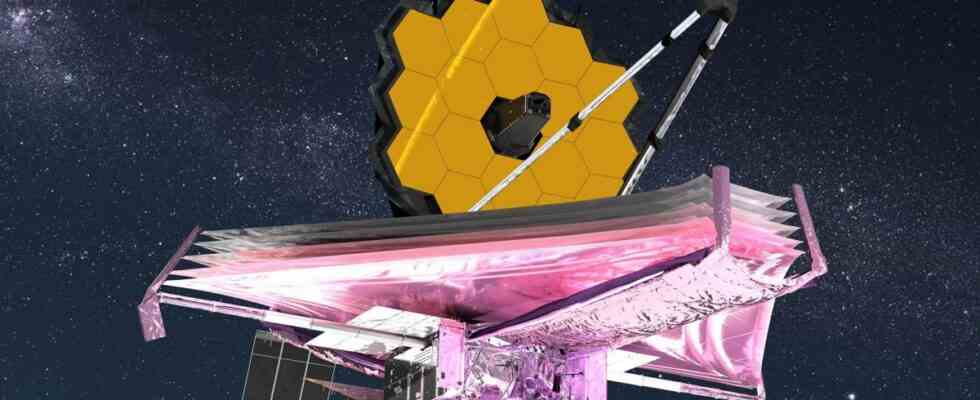The new James Webb Space Telescope (JWST) collects up to three times as much data in a single day as its predecessor Hubble does in a whole week. Up to 57 gigabytes come together with the JWST per day and have to be sent to Earth every day, because the SSD memory on board is almost only 68 gigabytes – Hubble collects an average of 18 gigabytes per week, the memory holds less than two gigabytes.
This is the result of a report by the US magazine IEEE Spectrum, according to which those responsible for the technology also assume that the memory will only be able to hold around 60 gigabytes after the first ten years. Should the space telescope actually reach the currently expected mission duration of over 20 years, the memory would have to be emptied several times a day before the end.
(Image: NASA, ESA, CSA, and STScI)
Contact via the Deep Space Network
The report on the technical equipment of the most modern space telescope states that no experiments were dared with communication technology. JWST system engineer Michael Menzel explains to the magazine, he had been suggested at least twice during development to install a laser-based communication technology on the telescope. But he insisted on using tried and tested systems. The space telescope is now transmitting on several frequencies in the Ka– and S-Band. Commands to the device and telemetry data as well as scientific data to Earth flow through various channels. NASA’s Deep Space Network is used for radio contact with the space telescope 1.5 million kilometers away.
The space telescope is operated by the space agencies NASA, ESA and CSA and was launched on December 25th. After a complex procedure of self-unfolding, it arrived at the L2 Lagrange point a month later. Here it looks away from the sun, earth and moon into space so that their thermal radiation does not disturb the infrared telescope. A huge protective screen blocks them – with a sun protection factor of one million.
The operating temperature of the device is 40 Kelvin (-233 degrees Celsius), one instrument was even cooled down to 6.4 Kelvin or -267 degrees Celsius. US President Biden was able to present the first scientific image to the world last Monday, and further impressive images followed on Tuesday. They are so sharp that there are galaxies just everywhere in the background. The performance of the space telescope is shown in an easy-to-read test report written by hundreds of scientists after the preparations were completed by July.
(mho)

